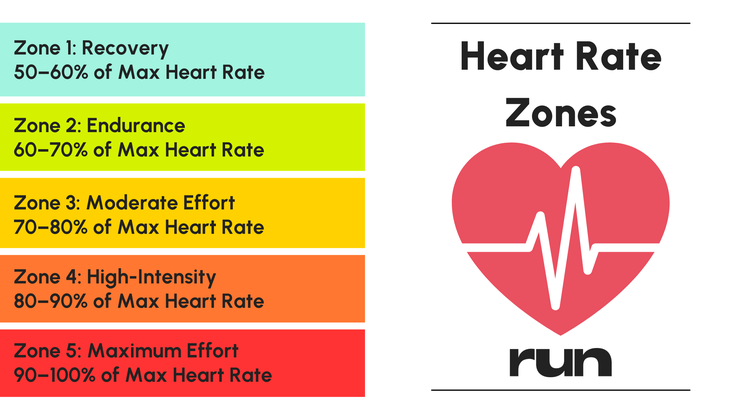No fancy equipment is needed—just your finger, your Notes app, and 60 seconds a day
(Photo: Athlete checking fitness tracker: Zamrznutitonovi/Getty; Design: Ayana Underwood/Canva)
Published September 5, 2025 03:03AM
Even though I prefer not to train and coach by heart rate, I have found that using these numbers—specifically resting heart rate values—can be a great tool for assessing recovery and how the body is adapting to training. Runners can measure their resting heart rate over time to evaluate their fitness gains during long bouts of training and to track when they might be overtraining or not properly recovering from their last hard workout.
While you likely have a running watch or heart rate monitor, you don’t even need it to check your resting heart rate. All you need to do is take your pulse and record the numbers.
Using Resting Heart Rate to Measure Fitness and Fatigue
Measuring your resting heart rate is pretty simple. As soon as you wake up in the morning, find your pulse on your neck, just under your chin, or on your wrist.
How to Calculate Resting Heart Rate
- Using a watch, count the number of times your heart beats for 20 seconds.
- Multiply this number by three, and you have your resting heart rate (RHR) in beats per minute (bpm).
- Record this number in your notebook next to the day’s date.
- Now make sure to repeat this process every morning.
With each passing day, you’re creating an accurate record of your morning heart rate that you can reference after challenging workouts to ensure that you’re recovered. You can also look at this data when you think you might be facing a case of overtraining. Before trying to glean any insight from these numbers, however, be sure to record at least three weeks of data.
What’s a Good Resting Heart Rate for Runners?
Like most things, a “good” resting heart rate for runners is personal. For the average person, a normal resting heart rate is between 60 and 100 bpm. For runners, a “good” resting heart rate typically falls between 40 and 60 bpm. Highly trained endurance athletes may see numbers even lower because regular cardiovascular training strengthens the heart muscle, allowing it to pump more blood with each beat.
Factors That May Affect Your Resting Heart Rate
While a lower RHR often signals better cardiovascular efficiency, there are plenty of fit people who have a naturally high RHR. Your RHR depends on many factors, like age, body type, and medications.
There are also environmental factors, such as temperature, altitude, air quality, and your emotional state. That’s why I recommend runners monitor their RHR over time. That way, you’ll be able to see your average RHR as well as outlier readings. A sudden spike in resting heart rate could indicate illness (and your immune system working overtime) before you even start to feel sick. It can also indicate that your body is overtaxed, suggesting that you need to take a break from training.
How to Use Your Resting Heart Rate Data When Training
Keep an eye on your resting morning heart rate in the two or three days after a hard workout. If it’s significantly elevated from its normal average (seven or more bpm), that’s a sign that you’re not fully recovered from the workout. Remember, there is going to be some variability in your daily heart rate regardless of your recovery level. Don’t be concerned if you’re three to four bpm over your normal average on a given day. In my experience, it takes a reading that’s seven bpm higher than normal to signify excessive training fatigue.
You can also use this data to identify long-term trends. If you notice your heart rate steadily increasing over a two- or three-week period, you may be overtraining or not scheduling enough recovery time between workouts. In this circumstance, consider taking a down week and monitor how your body and heart rate respond to the extra recovery. On the opposite spectrum, if you see your heart rate is slowly declining, it’s usually a good indication that you’re getting fitter. If you haven’t raced in a while, this can be a huge motivation booster.
While scientific research has not conclusively proven that a long-term resting heart rate specifically equates to overtraining, some data suggests a high probability that an increased heart rate is associated with training fatigue. (Taking a few extra recovery days after a challenging workout or a light week of training never hurt anyone.)
Why Morning Resting Heart Rate Data Helps Determine Fatigue Level
From a physiological perspective, measuring heart rate data to determine fatigue works because heart rate modulation is determined by the effect of the muscular contractions and nervous signals of both branches of the autonomic nervous system on the myocardium and the sinus node.
Increased parasympathetic nervous activity slows the heart rate, whereas increased sympathetic nervous activity accelerates the heart rate. The autonomic nervous system also fulfills a pivotal role in stress tolerance. Consequently, negative adaptation to training stress may involve the autonomic nervous system and result in an altered heart rate.

My aversion to training strictly by heart rate is that I’ve often found the data to be unreliable. When training, you need to factor in weather, stress, stimulant intake (e.g., caffeine consumption), and, of course, the variability of the monitor itself. However, measuring heart rate at the same time each morning avoids many of these potential pitfalls. While there is still the potential for some variability (like a bad night’s sleep or daily heart rate variation of two to four bpm), it is far less so compared to when used every day in training. In short, tracking morning heart rate can provide more reliable data.
Morning heart rate data, if tracked regularly, can be an easy, effective method for monitoring fatigue levels, how well you’re adapting to workouts, and can help prevent long-term overtraining. Considering it takes less than a minute to perform, it’s easy to add this simple practice to your daily routine to ensure you’re training optimally and recovering well between workouts.
Want more Outside health stories? Sign up for the Bodywork newsletter. Ready to push yourself? Enter MapMyRun’s You vs. the Year 2025 running challenge.


